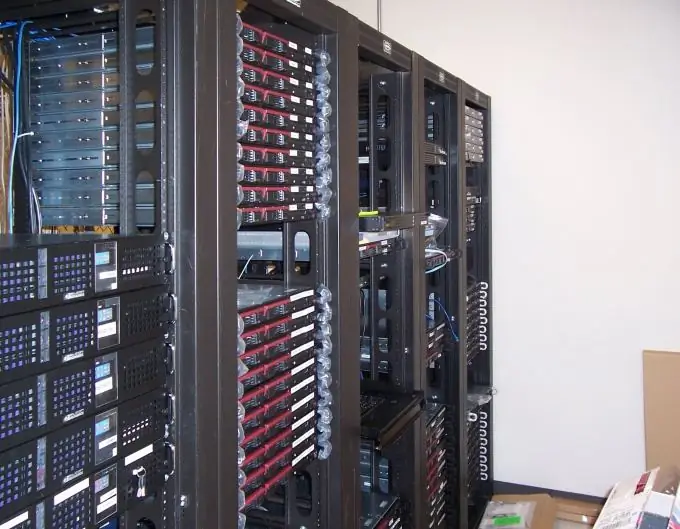- Author Lauren Nevill [email protected].
- Public 2023-12-16 18:48.
- Last modified 2025-01-23 15:15.
The exchange of data between nodes in the network is controlled by network protocols (logical interfaces) of different levels. The TCP transport protocol establishes the connection between the client node and the server node and controls the reliability of the transmission of data packets. Data exchange occurs between applications that are installed on computers. A network port is a convention, a number that is assigned to an application so that the transport protocol knows where to address packets. This number lies in the range from 1 to 65535.

Instructions
Step 1
For data exchange to take place successfully, the corresponding ports in the nodes must be open, i.e. could receive and transmit data. The process of finding open ports is called scanning. Both hackers and system administrators are engaged in it: the former - to inject malware onto someone else's computer, the latter - to prevent the former from doing it. You can check the ports by installing a special program on your computer - port scan or using online scanners. Go to the website WindowsFAQ.ru
Step 2
If your computer has a firewall with an attack detector and automatic blocking of the attacking host, disable this option or add WindowsFAQ.ru to the list of exclusions, otherwise the scanner will be blocked. In the Scan Settings section, enter the first and last port numbers from the range you want to check. These can be so-called. reserved numbers are from 1 to 1023, or all ports on your computer.
Step 3
It is important to correctly set the time during which the scanner will wait for a response from the port. If the "Connection timeout" (this is the name of this parameter) is made too small, the port may not have time to respond and will be mistakenly identified as closed. On the other hand, too long a wait time will slow down the scan significantly. It is better to take the recommended value - 0.3 sec.
Step 4
"Host address" and "Hostname" - your IP-address, which the service determines automatically. If no address is specified, scanning will not start. Click "OK" to start scanning. This will open a new window showing the progress of the process.
Step 5
After the search is completed, the following result will be displayed: - date and time of the check;
- host address;
- numbers of ports checked;
- the number of open and closed ports;
- the duration of the scan. In addition, the service will give recommendations on how to determine the process that uses open ports.
Step 6
You can run a scan from your computer. Download the program "Port Scanner v2.1"
Step 7
In the "Scan ports" section, enter in the boxes the starting and ending port numbers from the range that you will scan. If your computer is offline, you do not need to enter its IP address. Set the scan speed in the appropriate section. It is determined by the time to wait for a port response. It is better to choose an average speed in order, on the one hand, to avoid errors in determining the port status, and on the other, not to delay the verification process too much. Check the box next to "Show port information" to see the search result. The scanner finds open ports and identifies the processes that are using them.






